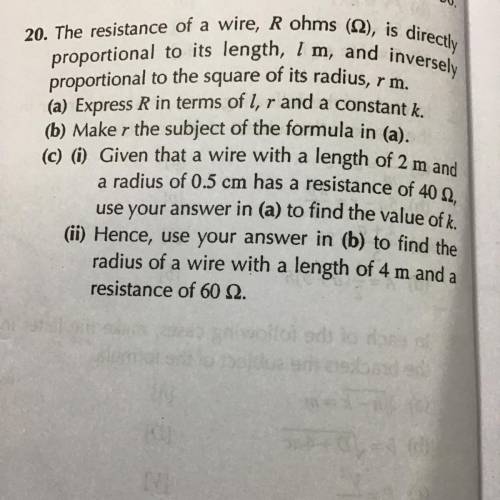The resistance of a wire, R ohms , is directly
proportional to its length, I m, and inversely
...

Mathematics, 31.10.2020 14:00 fairchildcj59
The resistance of a wire, R ohms , is directly
proportional to its length, I m, and inversely
proportional to the square of its radius, r m.
(a) Express R in terms of l, r and a constant k.
(b) Make r the subject of the formula in (a).
(c) (ii) Given that a wire with a length of 2 m and
a radius of 0.5 cm has a resistance of 40 ohms,
use your answer in (a) to find the value of k.
(ii) Hence, use your answer in (b) to find the
radius of a wire with a length of 4 m and a
resistance of 60 ohms.


Answers: 2


Other questions on the subject: Mathematics

Mathematics, 21.06.2019 13:00, elviaortiz402373
What is the equation of the graph that represents f(x)=x^4 stretched vertically by 2 and shifted up 3 spaces
Answers: 1

Mathematics, 21.06.2019 19:30, tyeni2crazylolp7a3hk
If chord ab is congruent to chord cd, then what must be true about ef and eg?
Answers: 1

Mathematics, 21.06.2019 23:00, keishadawson
Could someone me with this question i’ve been stuck on it for 20 minutes
Answers: 1

Mathematics, 21.06.2019 23:00, ronaldotheexplorer12
The ratio of the perimeters of two similar triangles is 4: 3. what are the areas of these triangles if the sum of their areas is 130cm2?
Answers: 3
You know the right answer?
Questions in other subjects:



Mathematics, 12.02.2021 20:30




History, 12.02.2021 20:30

Mathematics, 12.02.2021 20:30

Mathematics, 12.02.2021 20:30



